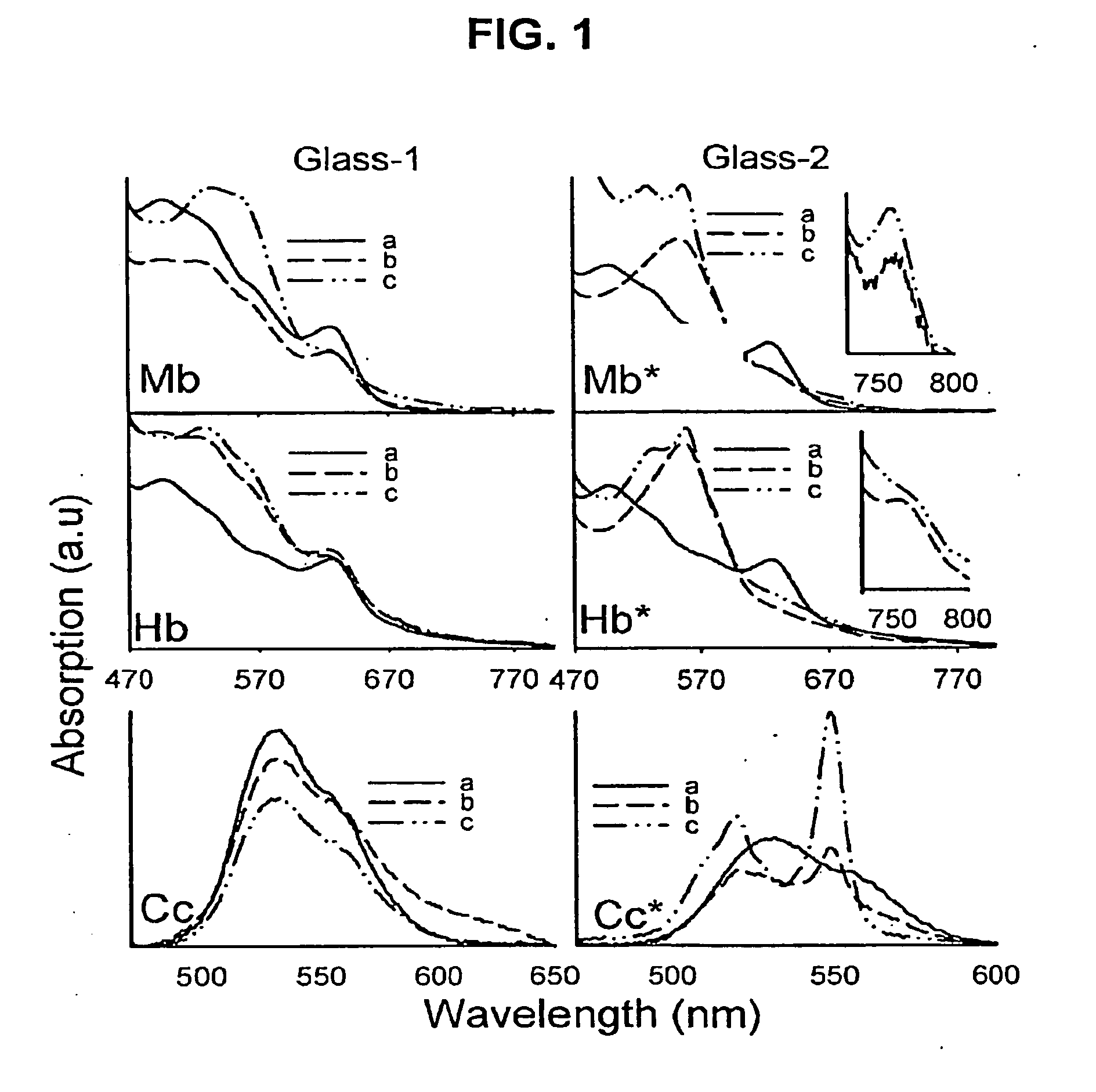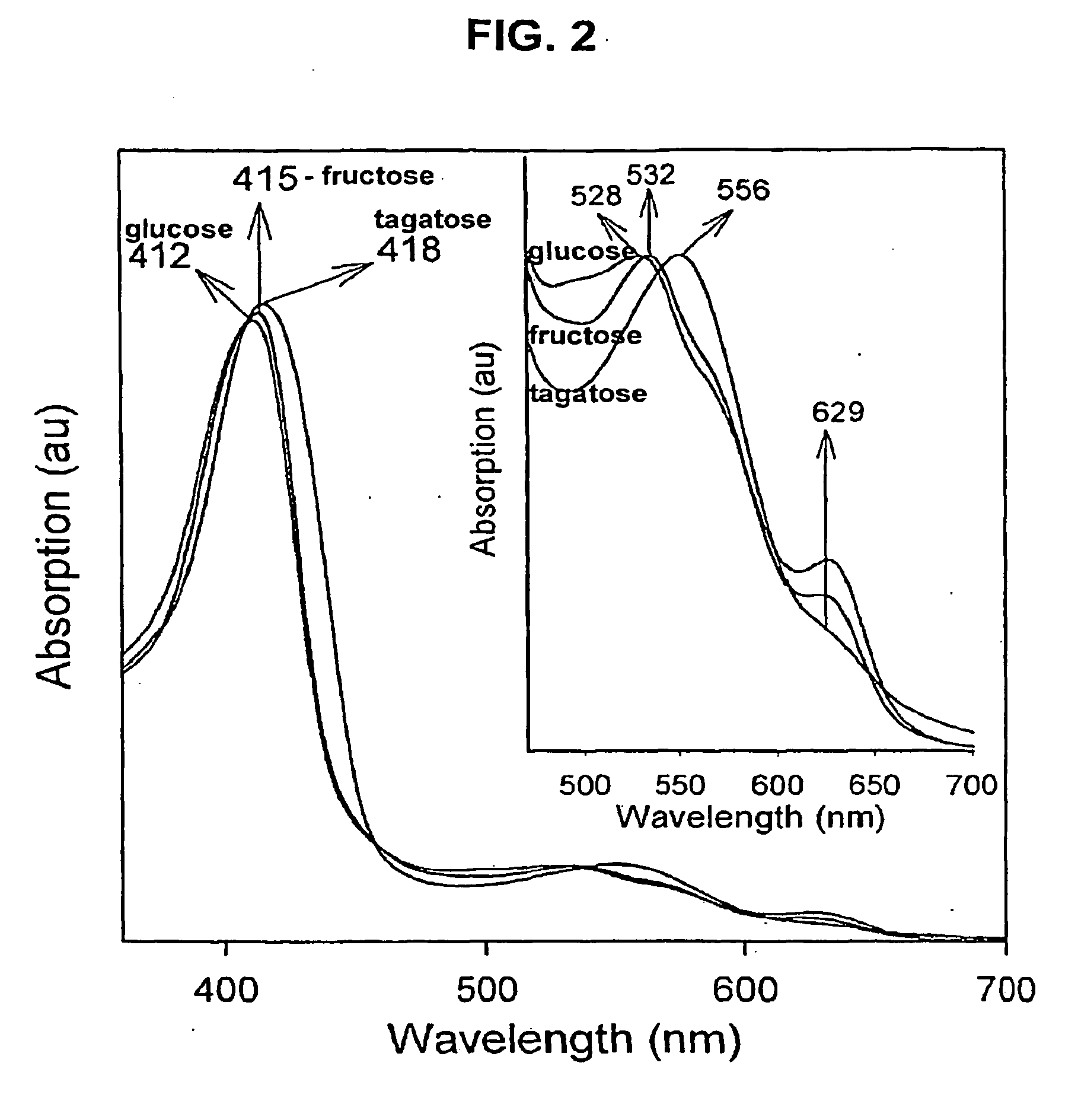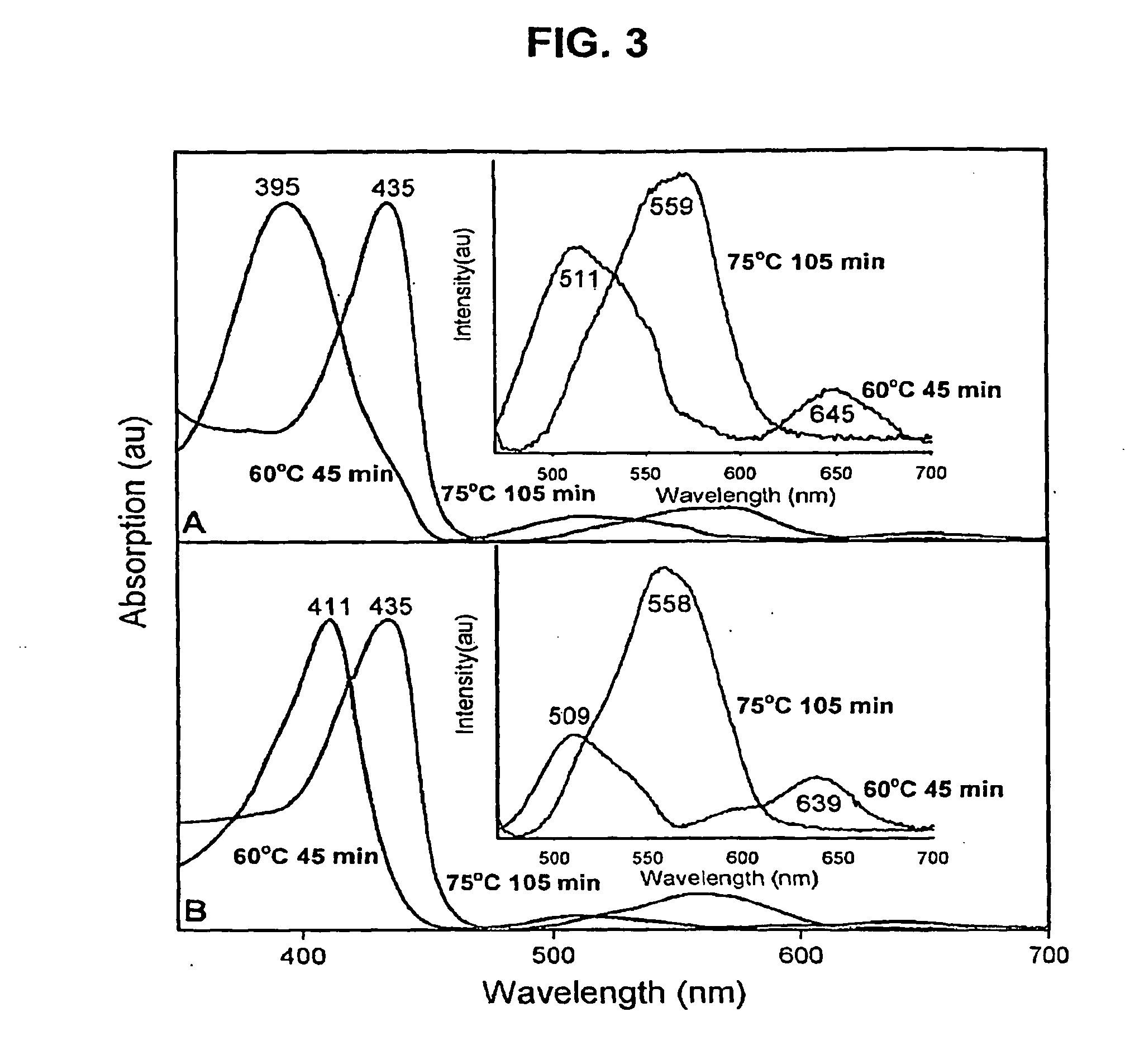Electron Transfer Through Glassy Matrices
a glassy matrix and electron transfer technology, applied in current conducting connections, non-metal conductors, cell components, etc., can solve the problems of thwarting the promise of exciting new protein-based technologies, unable to function most proteins when incorporated into glassy matrices, and unable to meet solvent/environmental requirements. strict requirements, intrinsic instability and stringent requirements
- Summary
- Abstract
- Description
- Claims
- Application Information
AI Technical Summary
Benefits of technology
Problems solved by technology
Method used
Image
Examples
example
Sugar-Derived Glasses Support Thermal and Photo-Initiated Electron Transfer Processes Over Macroscopic Distances
[0056]This Example is published in J. Biol. Chem. 281:36021-8.
example summary
[0057]Trehalose-derived glasses are shown to support long range electron transfer reactions between spatially well separated donors and protein acceptors. The results indicate that these matrices can be used not only to greatly stabilize protein structures but also to facilitate both thermal and photo-initiated hemeprotein reduction over large macroscopic distances. To date the promise of exciting new protein-based technologies that can harness the exceptional tunability of protein functionality has been significantly thwarted by both intrinsic instability and stringent solvent / environment requirements for the expression of functional properties. The presented results raise the prospect of overcoming these limitations with respect to incorporating redox active proteins into solid state devices such as tunable batteries, switches, and solar cells. The findings also have implications for formulations intended to enhance long term storage of biomaterials, new protein-based synthetic st...
PUM
| Property | Measurement | Unit |
|---|---|---|
| concentrations | aaaaa | aaaaa |
| thickness | aaaaa | aaaaa |
| temperature | aaaaa | aaaaa |
Abstract
Description
Claims
Application Information
 Login to View More
Login to View More - R&D
- Intellectual Property
- Life Sciences
- Materials
- Tech Scout
- Unparalleled Data Quality
- Higher Quality Content
- 60% Fewer Hallucinations
Browse by: Latest US Patents, China's latest patents, Technical Efficacy Thesaurus, Application Domain, Technology Topic, Popular Technical Reports.
© 2025 PatSnap. All rights reserved.Legal|Privacy policy|Modern Slavery Act Transparency Statement|Sitemap|About US| Contact US: help@patsnap.com



